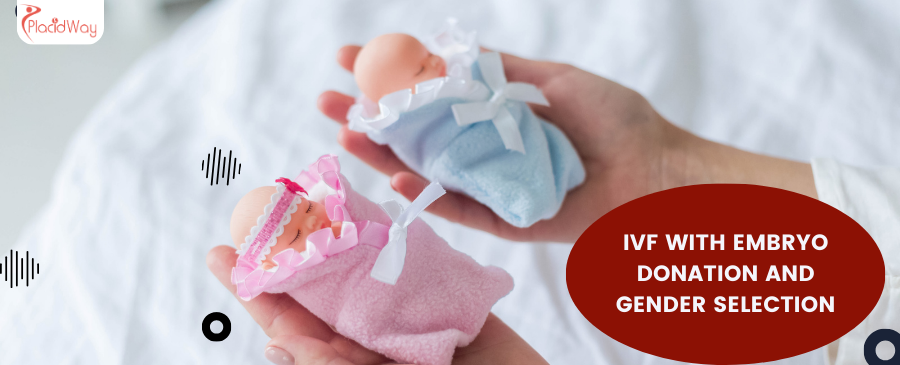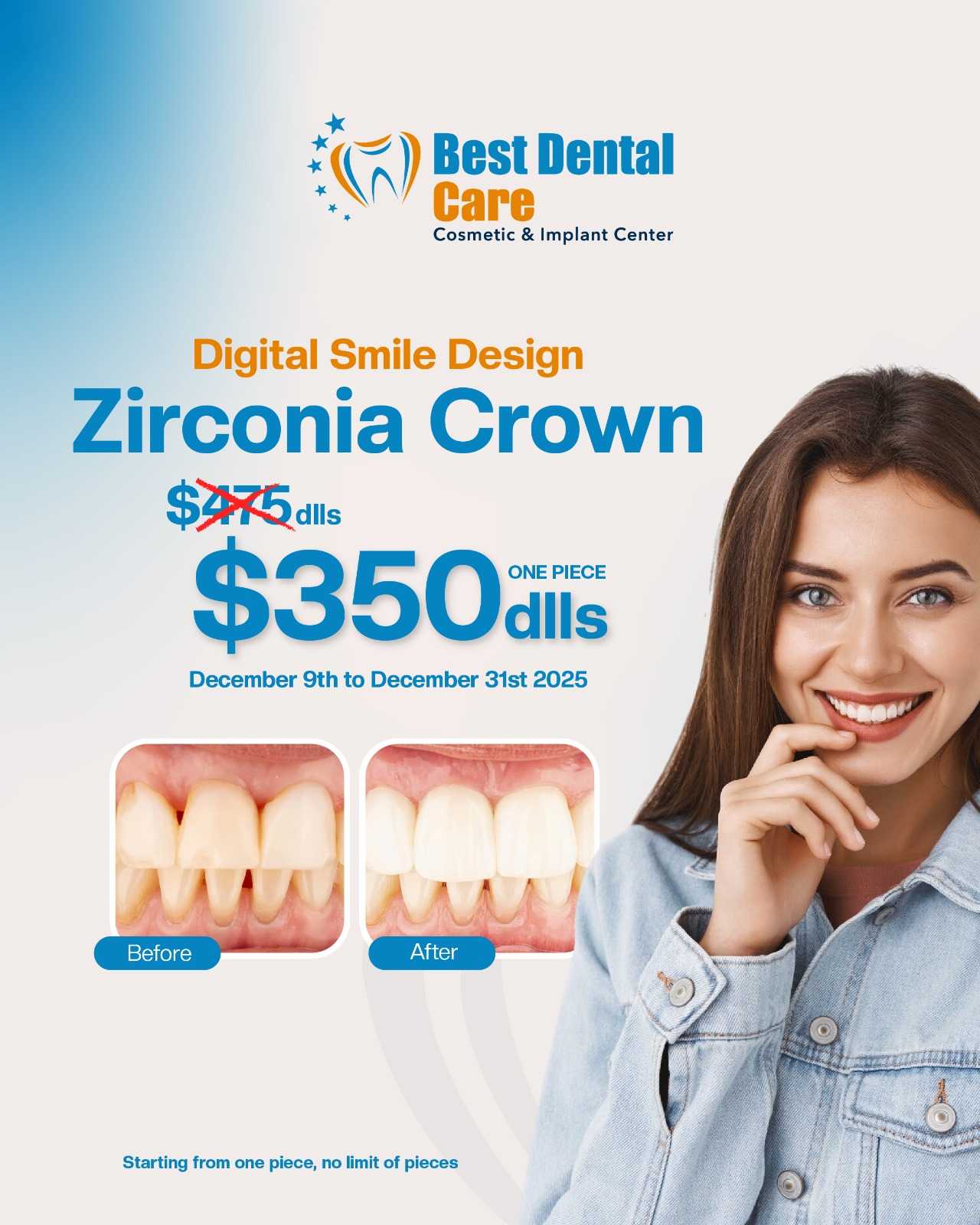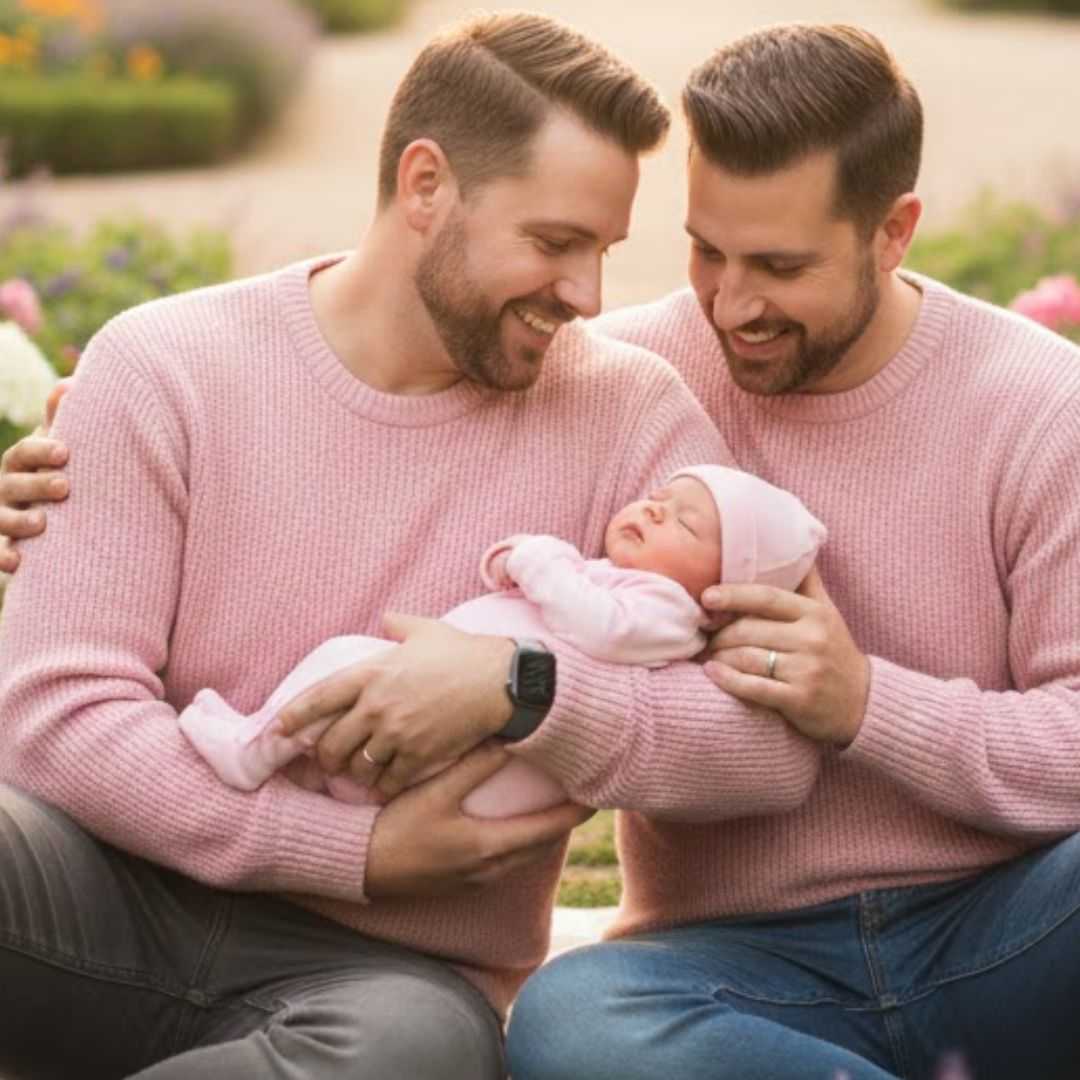
Building Your Family: IVF with Embryo Donation and Gender Selection Abroad
Navigating the path to parenthood can be complex, especially when traditional routes aren't viable. For many, advanced fertility treatments like In Vitro Fertilization (IVF) with embryo donation and gender selection offer a beacon of hope. This powerful combination provides a unique solution for individuals and couples grappling with infertility, recurrent pregnancy loss, or a desire to balance their family by choosing the gender of their next child due to genetic concerns or personal preferences.
In countries like the US, the costs associated with these procedures can be prohibitive, and legal restrictions on gender selection vary significantly. This is why a growing number of patients are looking for "IVF options abroad" and "fertility treatment solutions overseas." Medical tourism offers access to high-quality care, often at a fraction of the cost, with more liberal legal frameworks surrounding procedures like gender selection through PGT (Preimplantation Genetic Testing).
Embryo donation involves using embryos created by another couple who have completed their family and wish to donate their remaining embryos to those in need. These embryos are transferred to the recipient's uterus, similar to a standard IVF cycle. When combined with gender selection, genetic testing is performed on these donated embryos to identify their chromosomal makeup, including sex chromosomes, allowing for the transfer of an embryo of the desired gender. This process empowers hopeful parents, offering both the chance of pregnancy and the specific family composition they envision.
Whether you're struggling with severe infertility, have exhausted other treatment options, carry a genetic disorder you wish to avoid passing on, or simply wish for family balancing, exploring "IVF with embryo donation and gender selection abroad" opens up a world of possibilities. This guide will delve into every aspect of this journey, from understanding the indications and procedures to navigating international travel, ensuring safety, and comparing costs to help you make an informed decision for your family's future.
Who Needs IVF with Embryo Donation and Gender Selection? Understanding the Indications
While the desire for gender selection can be a primary motivator for some, the underlying need for IVF with embryo donation usually stems from significant fertility challenges. Common indications include:
- Severe Infertility: Couples where both partners have fertility issues (e.g., poor egg quality, low sperm count, premature ovarian failure) or single individuals who cannot use their own gametes.
- Repeated IVF Failures: When multiple conventional IVF cycles using one's own eggs and sperm have failed.
- Recurrent Pregnancy Loss: For those who experience multiple miscarriages, often due to chromosomal abnormalities, embryo donation can offer healthier embryos.
- Genetic Conditions: If one or both partners carry a severe genetic disorder that they wish to avoid passing on to their child, and suitable donor eggs/sperm are not available or preferred. Embryo donation guarantees an embryo free from the known genetic risk of the original parents. Gender selection can also be medically indicated to avoid X-linked genetic diseases.
- Advanced Maternal Age: As women age, egg quality and quantity decline, increasing the risk of chromosomal abnormalities. Donated embryos, often from younger donors, offer higher success rates.
- Family Balancing: A non-medical reason where parents wish to have a child of a specific gender to complete their family, for example, having children of both sexes. This is a common driver for "gender selection IVF abroad reviews" and searching for "IVF family balancing options."
- Single Parenthood: Single individuals who wish to become parents and require both egg and sperm donation.
What Causes Infertility or Genetic Concerns Leading to Advanced IVF?
Infertility is a complex condition with numerous potential causes, affecting both men and women. Understanding these factors is crucial when considering advanced treatments:
- Female Factors:
- Age: The most significant factor; egg quality and quantity decline rapidly after age 35.
- Ovulatory Disorders: Conditions like Polycystic Ovary Syndrome (PCOS) or hormonal imbalances that prevent regular ovulation.
- Fallopian Tube Damage or Blockage: Often due to pelvic inflammatory disease, endometriosis, or previous surgeries, preventing egg and sperm from meeting.
- Endometriosis: A condition where uterine tissue grows outside the uterus, affecting fertility.
- Uterine or Cervical Causes: Fibroids, polyps, or structural abnormalities can interfere with implantation.
- Male Factors:
- Abnormal Sperm Production or Function: Low sperm count, poor sperm motility, or abnormally shaped sperm.
- Sperm Delivery Problems: Blockages in the reproductive tract, genetic defects, or sexual dysfunction.
- Overexposure to Environmental Factors: Heat, pesticides, and certain medications can affect sperm.
- Unexplained Infertility: In about 10-15% of couples, no specific cause can be identified despite thorough investigation.
- Genetic Concerns: When one or both partners are carriers of genetic mutations (e.g., cystic fibrosis, Huntington's disease, sickle cell anemia), or if there's a history of chromosomal translocations. These conditions can lead to failed implantation, miscarriage, or the birth of an affected child. "Genetic testing for gender selection" is often a search term for those seeking to avoid such conditions, particularly X-linked ones.
Exploring Your Options: IVF, Embryo Donation, and Gender Selection Explained
Understanding the components of this advanced fertility treatment is key:
- In Vitro Fertilization (IVF): The foundational technology.
- Overview: Eggs and sperm are retrieved and fertilized in a lab to create embryos.
- Process: For embryo donation, the embryos are already created. The recipient woman undergoes hormone therapy to prepare her uterus for implantation (endometrial priming).
- Embryo Donation:
- What it is: Utilizing embryos that have been created by another couple (or using donor eggs and donor sperm) during their own IVF treatment, and subsequently donated for others to use.
- Benefits: Offers a higher chance of success for recipients with severe infertility, avoids the need for egg retrieval and sperm collection, and can be more cost-effective than using separate egg and sperm donors. It also gives unused embryos a chance at life.
- Matching: Clinics carefully match recipients with donor embryos based on characteristics like ethnicity, blood type, and physical traits, often providing detailed donor profiles.
- Gender Selection (Preimplantation Genetic Testing - PGT):
- Overview: A biopsy is taken from the embryo (typically at the blastocyst stage) and analyzed for genetic abnormalities and chromosomal sex (XX for female, XY for male).
- Types of PGT:
- PGT-A (for Aneuploidy): Screens for chromosomal abnormalities (e.g., Down syndrome) and also determines gender. This is the most common method for elective gender selection and improving "donor embryo success rates."
- PGT-M (for Monogenic/Single Gene Disorders): Used when there's a known genetic disease in the family to ensure the embryo is free of that specific condition. Gender selection can be a secondary benefit.
- PGT-SR (for Structural Rearrangements): For parents with chromosomal translocations.
- Process: Healthy, viable embryos of the desired gender are selected for transfer into the recipient's uterus.
Am I a Candidate for IVF with Embryo Donation and Gender Selection?
Determining your eligibility involves a comprehensive medical and psychological assessment:
- Female Recipient Health:
- Uterine Health: A healthy uterus free from significant abnormalities (e.g., large fibroids, severe adhesions) is essential for carrying a pregnancy.
- Overall Health: Good general health is necessary to withstand pregnancy. Pre-existing conditions like diabetes or heart disease need to be well-managed.
- Hormonal Evaluation: To ensure the uterus can respond to hormone therapy for endometrial preparation.
- Age Limits: While there are typically no strict age limits for male partners, female recipient age limits for embryo donation are generally higher than for IVF with own eggs. Many clinics abroad may treat women up to their early to mid-50s, provided they are in good health.
- Psychological Assessment: Clinics often require psychological counseling to ensure recipients are emotionally prepared for the unique aspects of embryo donation, including the lack of genetic connection to the child.
- Legal and Ethical Considerations: Eligibility for gender selection specifically depends heavily on the country's laws. Some countries permit it only for medical reasons (preventing X-linked diseases), while others allow it for "family balancing" reasons. This is why many search for "is gender selection legal in [country]?"
- Lifestyle Factors: Smoking, excessive alcohol consumption, and significant obesity can impact success rates and may need to be addressed prior to treatment.
What is the Recovery and Timeline for IVF with Embryo Donation?
Unlike conventional IVF which involves ovarian stimulation and egg retrieval, the recovery for embryo donation is generally much simpler for the recipient:
- Preparation Phase (2-4 weeks):
- The recipient will take estrogen and progesterone medications to thicken the uterine lining, preparing it for embryo implantation. This phase involves regular monitoring (blood tests, ultrasounds) which can often be done locally before traveling for the main procedure.
- Embryo Transfer (Short Procedure):
- Once the uterus is ready, the chosen embryo (or embryos, if opting for multiple) is transferred using a thin catheter through the cervix into the uterus. This is a quick, painless procedure, similar to a pap smear, usually requiring no anesthesia.
- Immediate Recovery (1-2 days):
- After transfer, most clinics recommend a day or two of rest, avoiding strenuous activity. Some light spotting or mild cramping can occur.
- The "Two-Week Wait" (Emotional Recovery):
- This is often the most challenging part. You'll wait approximately 10-14 days for a blood pregnancy test. During this time, it's normal to experience anxiety and hope. Emotional support is crucial during this period.
- Post-Pregnancy Confirmation:
- If pregnant, hormone support usually continues for several weeks into the first trimester. If unsuccessful, a follow-up consultation with your fertility specialist will help discuss next steps.
Overall, the physical recovery is minimal, but the emotional journey can be intense. Planning for adequate emotional support during the wait is vital.
Understanding the Risks and Emotional Considerations of Advanced IVF
While IVF with embryo donation and gender selection offers incredible opportunities, it's essential to be aware of potential risks and challenges:
- Medical Risks (Recipient):
- Multiple Pregnancy: The risk of twins or triplets increases if more than one embryo is transferred. This carries higher risks for both mother (gestational diabetes, preeclampsia, preterm labor) and babies (prematurity, low birth weight, developmental issues). Most clinics recommend single embryo transfer (SET) to minimize this risk, especially when using high-quality donated embryos.
- Ectopic Pregnancy: Though rare, the embryo can implant outside the uterus (e.g., in the fallopian tube).
- Ovarian Hyperstimulation Syndrome (OHSS): This is virtually eliminated for recipients in embryo donation as they do not undergo ovarian stimulation.
- Medication Side Effects: Hormonal medications may cause mild side effects like bloating, mood swings, or breast tenderness.
- Risks to the Embryo (from PGT/Biopsy):
- The embryo biopsy procedure is generally very safe, performed by highly skilled embryologists. However, there's a tiny, theoretical risk of damaging the embryo, though rates are exceedingly low in experienced hands.
- Sometimes, results can be inconclusive or mosaic (containing both normal and abnormal cells), leading to uncertainty.
- Emotional and Psychological Considerations:
- Emotional Rollercoaster: The journey can be intense, with high hopes, anxiety during the wait, and potential disappointment if treatment fails.
- Genetic Connection: For embryo recipients, grappling with the lack of genetic connection to their child can be an emotional process. Pre-treatment counseling is often vital to address these feelings.
- Decision-Making Stress: The weight of making critical decisions about gender, number of embryos, and clinic choice can be stressful.
- Dealing with Unsuccessful Cycles: It's crucial to prepare for the possibility that the first cycle may not be successful and to have a support system in place.
- Ethical Debates: While widely accepted for medical reasons, elective gender selection for family balancing raises ethical questions for some, which is why its legality varies globally.
How Much Does IVF with Embryo Donation and Gender Selection Cost Globally?
Cost is a significant driving factor for patients seeking "IVF with embryo donation costs" abroad. The price difference can be staggering, making international travel a financially sensible option for many.
Estimated Worldwide Cost Comparison (IVF with Embryo Donation & Gender Selection)
| Country/Region | Estimated Cost Range (USD) | Notes on Value/Legality |
|---|---|---|
| United States | $25,000 - $60,000+ | High cost; gender selection for family balancing legally permitted but not universally offered by clinics. |
| United Kingdom / Canada | $20,000 - $45,000+ | High cost; gender selection generally only for medical reasons to prevent serious genetic diseases. |
| Spain / Czech Republic | $7,000 - $15,000 | Very popular medical tourism destinations. Legal for family balancing (e.g., Cyprus is very popular for this), often with comprehensive packages. High quality. |
| Mexico / Colombia | $6,000 - $12,000 | Affordable, growing in popularity. Gender selection for family balancing is generally legal. Proximity to North America. |
| India / Thailand | $5,000 - $10,000 | Historically very affordable. Regulations can vary; gender selection laws are complex and may be restricted in some areas. *Always verify current legality.* |
| Cyprus (Northern & Southern) | $7,000 - $14,000 | Highly sought-after for elective gender selection for family balancing. Reputable clinics, good success rates. |
These costs typically include the donor embryo, PGT for gender selection, embryo transfer, initial consultations, and basic medications. Travel, accommodation, and extended stays are additional expenses.
Why Consider IVF with Embryo Donation and Gender Selection Abroad?
The reasons for "travel for fertility treatment" are compelling:
- Cost Savings: As seen in the table above, the most significant advantage is the drastically lower cost, making treatment accessible to those who couldn't afford it domestically. This is a key factor for "IVF with embryo donation costs" searches.
- Legal Accessibility for Gender Selection: Many Western countries have strict regulations or outright bans on gender selection for non-medical reasons (family balancing). Countries like Cyprus, Spain, Mexico, and some others offer more liberal legal frameworks, allowing patients to pursue their family planning goals.
- Shorter Waiting Times: In some countries, particularly for donor embryos, waiting lists can be lengthy. Clinics abroad often have a more readily available supply of donor embryos.
- Access to Advanced Technologies and Expertise: Many international clinics are at the forefront of fertility treatment, offering state-of-the-art labs and highly experienced specialists.
- Anonymity and Privacy: Some individuals prefer the privacy that comes with seeking treatment in another country.
- Combined with a Vacation: For many, the trip can also serve as a refreshing getaway, reducing stress associated with the treatment process.
Which Countries Offer the Best Value and Expertise for This Procedure?
When searching for "best countries for embryo donation and gender selection," several destinations consistently emerge as leaders:
- Spain: Renowned for its advanced reproductive medicine, excellent success rates, and robust legal framework for anonymous egg and embryo donation. Gender selection for family balancing is generally permissible.
- Czech Republic: A highly popular destination in Europe, offering competitive prices, high-quality clinics, and a good supply of donor embryos. Legal for family balancing.
- Cyprus (Northern and Southern): A true hotspot for elective gender selection due to its permissive laws for family balancing. Clinics are experienced with international patients and offer comprehensive packages.
- Mexico: Becoming increasingly popular for North American patients due to proximity, affordability, and clinics offering high standards of care, with gender selection generally allowed.
- Greece: Offers a combination of quality care, often in beautiful settings, with reasonable costs.
These countries not only provide cost-effective options but also maintain high clinical standards, often attracting international accreditation and employing specialists trained in leading global institutions.
What Should I Expect When Traveling for IVF with Embryo Donation and Gender Selection?
Embarking on this journey requires careful planning:
- Initial Consultations (Remote): Most clinics offer virtual consultations to review your medical history, discuss treatment plans, and explain the process. This helps determine suitability and sets expectations.
- Pre-Travel Medicals: You'll likely undergo preliminary tests (blood work, ultrasounds) in your home country, with results sent to the overseas clinic.
- Travel Logistics:
- Duration of Stay: Typically, you'll need to be in the destination country for 1-2 weeks for the embryo transfer and immediate post-procedure rest. The preliminary hormonal preparation for your uterus can often be managed at home under local medical supervision.
- Flights & Accommodation: Book flights and suitable accommodation well in advance. Consider options near the clinic.
- Visa & Insurance: Check visa requirements for the destination country and ensure you have appropriate travel and medical insurance.
- During Treatment:
- Clinic Visits: Regular appointments for monitoring your uterine lining and the embryo transfer procedure.
- Medication: You'll continue taking prescribed hormones.
- Support: Many clinics offer multilingual staff and patient coordinators to assist international patients.
- Post-Procedure:
- Rest: Follow clinic advice regarding rest and activity restrictions.
- Return Home: Most patients return home after a day or two of rest post-transfer.
- Follow-up: The pregnancy test will typically be done at home, with results communicated to the clinic.
How Can I Ensure Safety and Quality When Choosing a Clinic Abroad?
Ensuring you choose a safe and high-quality clinic is paramount:
- Accreditation and Certification: Look for international accreditations like Joint Commission International (JCI), or local national accreditations. These indicate adherence to global standards of patient safety and quality.
- Doctor Credentials and Experience: Research the fertility specialists. Are they board-certified? How much experience do they have with embryo donation and PGT for gender selection?
- Success Rates: Ask for transparent, audited success rates specific to embryo donation and, if possible, for your age group. Be wary of clinics that promise unusually high or guaranteed success.
- Lab Quality: The embryology lab is the heart of IVF. Inquire about their technology, staff expertise, and quality control measures.
- Patient Reviews and Testimonials: Search for "gender selection IVF abroad reviews" and "donor embryo success rates." Look for consistent positive feedback and read independent forums.
- Communication: Ensure the clinic has excellent communication protocols, including multilingual staff if needed.
- Legal Counsel: If unsure about legal aspects of gender selection or embryo donation in a particular country, consider seeking independent legal advice.
- Medical Tourism Facilitators: Reputable companies like PlacidWay specialize in connecting patients with vetted, high-quality international clinics. They can provide unbiased information, help compare options, and manage logistics, adding an extra layer of assurance.
What Are Patient Success Stories and Testimonials from Abroad?
The journey of IVF with embryo donation and gender selection can be incredibly rewarding. Thousands of patients have successfully built their families through medical tourism, sharing stories of hope and success:
- A Story of Renewed Hope: Sarah and Mark from the UK had faced multiple failed IVF cycles and the heartbreak of recurrent miscarriages. They traveled to a clinic in Spain for embryo donation with PGT-A. "The cost was significantly lower, and the level of care was exceptional," Sarah recalls. "We felt heard and supported. After years of disappointment, we're now expecting our healthy baby girl!" Their story reflects many who find renewed hope and effective treatment abroad.
- Achieving Family Balance: Maria and David from Canada, already parents to two wonderful boys, dreamt of having a daughter to complete their family. With gender selection highly restricted in Canada for non-medical reasons, they turned to a clinic in Cyprus. "It was an incredible experience," David shares. "The clinic was professional, and we felt so comfortable. Now, we're preparing for the arrival of our little girl. It's truly a dream come true."
- Overcoming Genetic Predisposition: John and Emily from the US were carriers of a serious genetic condition. They chose to undergo IVF with embryo donation and PGT-M (and PGT-A for gender selection) in Mexico to ensure their child would be free of the disease and to balance their family. "The genetic testing gave us immense peace of mind," Emily says. "And the team in Mexico was outstanding, guiding us through every step. We're so grateful for our healthy baby."
These stories underscore the emotional, financial, and medical benefits that "IVF with embryo donation and gender selection abroad" can offer, turning long-held dreams of parenthood into reality for countless families worldwide.
Take the Next Step with PlacidWay
Ready to explore treatment options abroad? Discover top clinics, compare prices, and get a free quote tailored to your needs with PlacidWay.
Fertility Treatment Abroad, Best Fertility Clinics





.png)

.png)
.png)

Share this listing